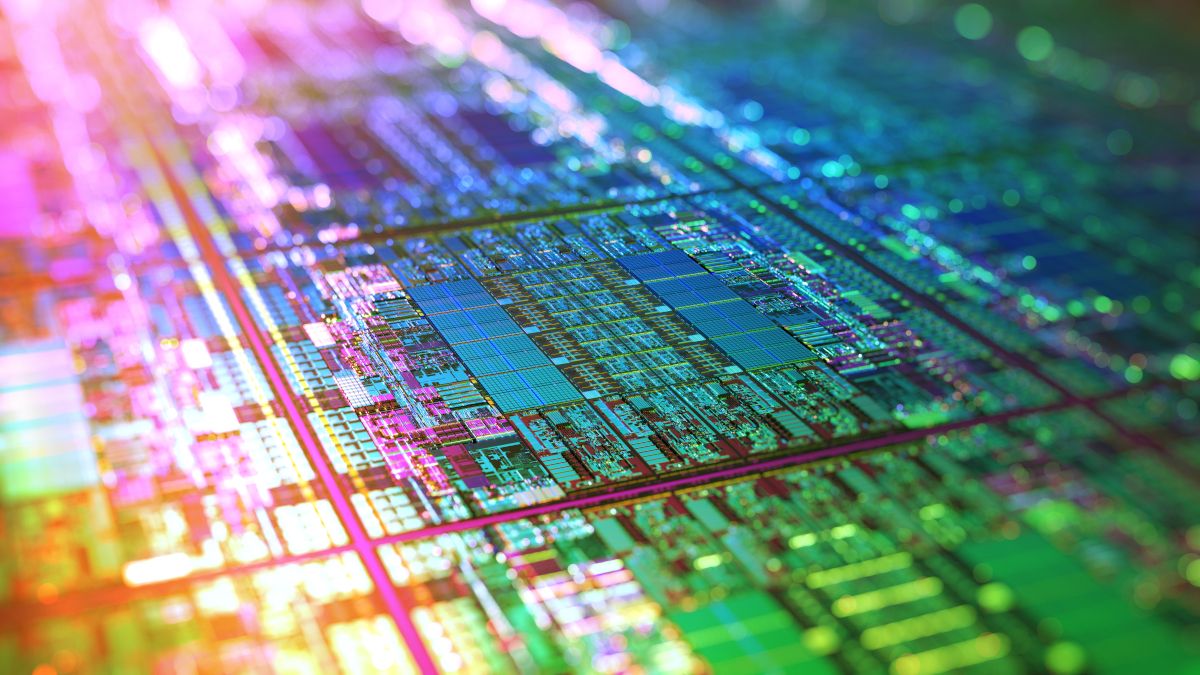Quick Links
There's a lot of talk about new manufacturing processes for CPUs. Not that long ago the talk was all about 10nm and 7nm. The latest "nm" to enter the game is 5nm, which is already in use in some devices and is heading to PCs in the near future.
Newer 5nm designs, like other manufacturing processes before them, promise better power efficiency and faster performance and just generally pushing CPU technology forward. Before we get into all that, however, let's talk about what a new manufacturing process and moving to a new process node is all about.
What Does a New Process Node Mean?
At its heart changing to a new process means changing the way that a processor is manufactured. Typically, this means shrinking down the transistors allowing companies to pack more of them into a given area on the silicon. Transistor density is the name of the game for improving a processor. The more transistors you have, the more calculations a processor can do, and thus the more powerful it can be.
This is what the famous Moore's Law is all about. While not a true scientific law, and more of an observation, Moore's Law predicted that the number of transistors in an integrated circuit doubles about every two years.
To express the concept of an improved process node companies use the 'nm' nomenclature. Intel, for example, uses 14nm CPUs for its desktops and has done so since 2014. Instead of focusing on new process nodes for its desktop processors the company's been focused on making 14nm designs more efficient and powerful. That approach has since hit a wall, but for years it meant more cores with faster speeds by improving the CPU architecture instead of substantial changes to the manufacturing process.
AMD, meanwhile, has been moving to new nodes for its Ryzen processors. Ryzen 1000 series started at 14nm, four years later Ryzen 5000 series were on to an improved version of 7nm, with eyes on 5nm for a new generation in 2022.
That difference is due to a number of factors, which are beyond the scope of this article. Briefly, however, Intel, manufactures its own CPUs and for years favored the "monolithic" approach to CPU design and production. AMD designs its own non-monolithic processors, but it outsources the creation of new manufacturing processes and production to TSMC, a Taiwan-based company that also does manufacturing for companies such as Apple, Arm, Nvidia, and others.
New processes and their respective 'nm' numbers, however, don't translate across companies. You cannot say, for example, that an Intel 10nm processor is going to be slower than an AMD 7nm processor. That's in part because 'nm' isn't a universal standard for which to compare competing processors.
So What Is "nm" All About?
The term "nm" stands for nanometer, a tiny measurement that is one-billionth of a meter. It's tiny, and there was a time when process nodes were truly measured in actual nanometers. It usually defined the size of a transistor's gate length and metal half-pitch (half the distance between the beginning of one metal interconnect and the next on a chip), which were both the same size. That reality stopped in the 90s, however, and ever since then, the 'nm' measurement has been nothing more than a marketing term.
A new 'nm' size does indicate that there's been a significant improvement in the manufacturing technology, but it has nothing to do with a specific measurement you could carry out on the processor itself.
That's why, for example, many critics say that Intel's 10nm node, which it currently uses in laptops for CPU families such as Tiger Lake and Ice Lake, is comparable to TSMC's 7nm node.
So why is 'nm' still used? Basically, inertia. It's what tech companies have always done so they keep doing it.
There are other ideas out there for different naming conventions, as reported by IEEE Spectrum. One approach is to switch to something called the LMC metric that expresses the density of logic, memory, and interconnects in a given processor. Then there's the idea to use a GMT (gate pitch, metal pitch, tiers) number, which would get back to basic CPU measurements like gate and metal pitch (not half-pitch), as well as indicating how many layers a CPU has---future CPUs may commonly use stacking technology to improve performance.
Despite pushes to change naming conventions, however, chip makers are all about the 'nm' naming scheme for now.
When Will We See 5nm Chips?
If you have an iPhone 12 then you've already seen 5nm processors, and the same goes for the iPhone 13 family. Qualcomm also has a number of 5nm processors including the Snapdragon 780G and the Snapdragon 888. The latter processor is used in the OnePlus 9, and others. Samsung's Galaxy S21 family of phones also uses a 5nm processor, the Samsung Exynos 2100.
As for PCs, AMD is slated to use the 5nm process from TSMC for a new generation of Ryzen desktop processors in 2022.
Intel 5nm processors are coming too, but it's expected to take a while. The company's desktop processors are expected to come off 14nm and move to 10nm with Alder Lake in late 2021 or early 2022. After that, a 7nm process is expected in late 2022 or 2023, and then in 2024 there could be an Intel 5nm processor. This timetable could change, but right now that's more or less what Intel watchers are expecting to see.
Interestingly, based on what Intel is saying, its 5nm CPUs should be the first to drop the notion of 'nm' opting for 20A (A as in Angstrom) instead. Just like 'nm,' however, Intel's Angstrom era is also about marketing terminology and not a reference to actual measurements.
5nm: The Bottom Line
While 5nm processors are already here in mobile form and heading to PCs soon, don't put too much stock in the term beyond differentiating improvement in one manufacturing process from another within a given company.



